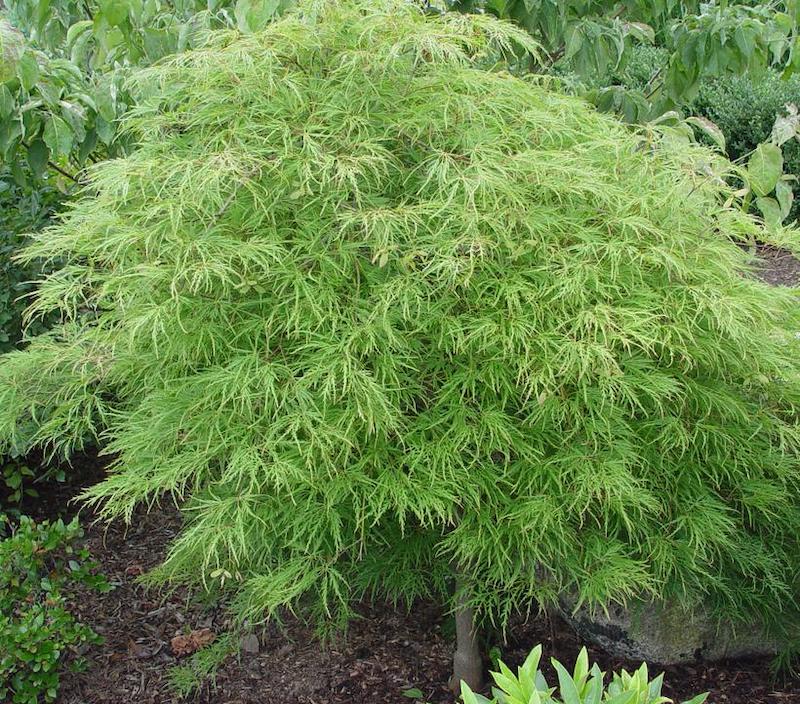Japanese maples, Acer palmatum, are popular landscape trees available in a wide range of growth habits and leaf colors. These trees are slow growing and thrive with moderate to low levels of nutrients. Established Japanese maples benefit from consistent fertilization, especially if your soil lacks sufficient organic matter. Fertilize Japanese maples if you see signs of nutrient deficiencies, such as yellowing of the leaves with darker veins, or when the growth rate has slowed significantly. With proper care and fertilization, you can grow beautiful, healthy Japanese maples.

How to Fertilize Japanese Maples
Before you fertilize your Japanese maple, identify the location of the drip line. This is the area on the ground that is located directly under the circumference of the tree’s canopy. The feeder roots are concentrated at the drip line, most of them being about a foot deep into the soil. Apply a slow-release fertilizer about halfway between the trunk and the drip line, evenly spreading it to roughly 1-2 feet beyond the drip line. Water well after fertilizing. Japanese maples should only be fertilized if a soil test indicates a nutrient deficiency. Too much fertilizer may lead to an abundance of weak, thin growth and fertilizer burn, especially if the fertilizer is high in nitrogen. A soil test will also indicate the soil pH, which is important for the bioavailability of plant nutrients. Japanese maples grow best at a pH of 6.0-7.0, and the soil should be amended appropriately if the pH falls outside of this range.
Best Time To Fertilize Japanese Maples
The best time of the year to fertilize Japanese maples is in early spring before the tree leafs out. Japanese maples only need to be fertilized once per year. If the tree is growing in soil enriched with plenty of organic matter, fertilization can be reduced to about every other year. Make sure the soil is sufficiently moist before fertilizing, and refrain from applying fertilizer during periods of extreme drought or heat to prevent fertilizer burn. Avoid fertilizing Japanese maples in late summer through fall, which can cause spurts of weaker, new growth that will be sensitive to winter damage. Do not fertilize Japanese maples immediately after planting, as this can negatively affect root establishment.
Best Fertilizer For Japanese Maples
Choose a slow-release, granular formula for Japanese maples. An organic fertilizer formulated for trees, such as Espoma Tree-Tone 6-3-2, will provide a continuous supply of nutrients throughout the growing season. Avoid liquid and other quick-release fertilizers, as these can burn the roots and leaves of Japanese maples.
Japanese Maple Fertilizing Tips
- Fertilize Japanese maples once per year in early spring
- Use a slow-release, granular fertilizer
- Apply fertilizer around the tree’s drip line
- Water well after fertilizing
Warnings
-Always wear protective gloves and a face mask when handling chemical fertilizers.
-Closely follow all directions and storage guidelines that are on the fertilizer label.
 |
Lauren Youngcourt - Published 04-28-2023 |
